
MIL-HDBK-1003/3
Section 2: GENERAL
2.1 Load and Energy Calculations
2.1.1 Load Calculation Procedures. Refer to the ASHRAE
Handbook, Fundamentals, for the acceptable method of performing
load and energy calculations.
2.1.1.1 Load Calculation Form. Except for small buildings and
minor renovation, less than 8000 square feet, loads should be
calculated using a computer program which applies one of the
methods in the ASHRAE Handbook, Fundamentals, Chapters 25 and 26.
Simplified load calculation equations are reproduced in Section 5
of this handbook. These simplified equations may be used on
smaller buildings with hand calculations.
2.1.1.2 Design Conditions. Select indoor and outdoor summer
and winter design conditions in accordance with MIL-HDBK-1190.
If a known micro-climate condition exists at the site, or if
building site location is not shown in NAVFAC Publication P-89,
Engineering Weather Data; consult the Navy design manager or
project leader (DM or PL) for instructions.
2.1.1.3 Variable Air Volume (VAV) Systems. For VAV systems,
refer to Appendix C and ASHRAE Handbook, Fundamentals, for the
acceptable method.
2.1.1.4 Outdoor Air Load
a) Infiltration. Use infiltration rates and the
method of calculation prescribed in ASHRAE Handbook,
Fundamentals.
b) Ventilation. Use ventilation rates for IAQ
prescribed in ASHRAE Standard 62, Ventilation for Acceptable
Indoor Air Quality and the method of calculation included in
ASHRAE Handbook, Fundamentals.
2.1.2 Energy Analysis
2.1.2.1 Building Orientation. Building orientation,
fenestration, lighting, and geometry can have a profound effect
on the building energy consumption, system selection, and zoning.
Therefore, the HVAC designer should consult with the architect
during the early concept stage to optimize the overall design.
2.1.2.2 Architectural Features. The building mass, tightness
of construction, window treatment, occupancy zoning, and other
characteristics can also impact the HVAC design. These features
4
Simpo PDF Merge and Split Unregistered Version - http://www.simpopdf.com

MIL-HDBK-1003/3
need early consideration by the design disciplines to achieve the
best overall design concept. Consider using ENVSTD 24, a
Department of Energy (DOE) envelope system performance compliance
calculation program to assist the architect and mechanical
engineer to evaluate the proposed facilities’ compliance with
ASHRAE Standard 90.1, Energy Efficient Design of New Buildings
Except Low-Rise Residential Buildings, 10 CFR 435, and
MIL-HDBK-1190 design energy targets. ENVSTD 24 is available on
the Construction Criteria Base (CCB) CD-ROM, or from ASHRAE or
DOE.
2.1.2.3 Mechanical System Selection. Life cycle cost analysis
of candidate systems should be used to determine the best system
selection within the parameters cited in par. 1.4. Include
electrical demand charges as well as energy charges in the
analysis. Include rebates offered by the utility for use of
particular forms of energy or types of equipment, such as ice
storage or gas-fired adsorption chillers. Refer to MIL-HDBK-1190
for guidance on the application of this procedure.
2.1.2.4 Electrical Lighting System Selection (Daylighting).
The HVAC design engineer should assist in the evaluation of
daylighting to ensure that electrical energy savings are not
offset by increased energy required by the HVAC system due to
increased heating and cooling loads. Consider using LTGSTD 24, a
DOE lighting prescriptive and system performance compliance
calculation program to assist the architect and electrical and
mechanical engineer to evaluate the proposed facilities
compliance with ASHRAE Standard 90.1, 10 CFR Part 435, Energy
Conservation Voluntary Performance Standards for Commercial and
Multi-Family High Rise Residential Buildings, Mandatory for New
Federal Buildings and MIL-HDBK-1190 design energy targets.
LTGSTD 24 is available on the CCB CD-ROM or from ASHRAE or DOE.
2.1.2.5 Special Energy Conservation Features. There remains a
continuing need to achieve energy conservation on Navy buildings
by optimization of new building designs, accurate control
systems, retrofit of older buildings, and incorporation of
special energy conservation features wherever appropriate (as
justified by life cycle cost).
a) Solar. Include active and passive solar systems
for space heating, for heating pools, and for domestic hot water
only if economically feasible. A new economic analysis need not
be performed if a previous study on a similar facility with
similar weather conditions is available.
b) Heat Recovery Techniques. Refer to Appendix A for
an exposition of some of the various techniques of heat recovery.
5
Simpo PDF Merge and Split Unregistered Version - http://www.simpopdf.com

MIL-HDBK-1003/3
Application of these techniques should only be considered when
required to meet the design energy budget and when operation and
maintenance are judged to be within the capability of local
maintenance personnel.
c) Thermal Storage. Due to the added complexity in
system operation and controls, only use thermal storage systems
when required to meet the building energy budget and when proven
cost effective on a life cycle cost basis.
(1) Savings. Include demand charges, energy
charges (energy cost may be lower when thermal storage is charged
off peak), and savings in refrigeration equipment size reduction
in the life cycle cost analysis. An electric rate structure with
a high demand charge or with time-of-day metering rates provides
the best opportunity for savings on investment. Ensure that the
analysis includes the appropriate energy cost, e.g., billing for
electrical energy at a master meter vice the individual building
meter. If the station is master metered for consumers, addition
of a single building may have no significant impact on the demand
charge, and additional energy used may be at the lowest available
rate. Other opportunities for savings include reduced cost for
electric service, increased efficiency of equipment operating at
night, and reduced cost for fire protection if water storage can
be integrated with thermal storage requirements.
(2) Equipment Selection. Packaged thermal storage
systems complete with controls are preferred over field
fabricated systems.
2.2 Equipment Selection
2.2.1 General. Determine the type of heating and cooling
system to be used by the computer energy and life cycle cost
analysis as described in MIL-HDBK-1190, Chapter 8. Applicable
Navy design manuals and guide specifications provide guidance on
the recommended classes of equipment to be evaluated for the
particular application and size range.
2.2.2 Heating Equipment
2.2.2.1 Boiler Sizing. Refer to MIL-HDBK-1003/6, Central
Heating Plants and ASHRAE Handbook, Fundamentals for sizing
boilers. Boiler sizing should consider:
a) Connected load, which includes the heating load,
plus (where applicable) pipe loss and pickup, domestic hot water,
process loads, and boiler plant auxiliaries.
6
Simpo PDF Merge and Split Unregistered Version - http://www.simpopdf.com

MIL-HDBK-1003/3
b) Boiler plant's turndown ratio.
c) Provisions for future loads and standby for
essential loads where applicable.
2.2.2.2 Boiler Fuel. Refer to MIL-HDBK-1003/6 for information
on how to select boiler fuel. Consider Navy criteria, fuel and
life-cycle costs, and Federal and local emission standards.
2.2.2.3 Auxiliary Equipment. Refer to MIL-HDBK-1003/6 and Navy
guide specifications for information on types and sizing of
auxiliary equipment. Some notes on plant equipment are as
follows:
a) Centrifugal Pumps. Check the system net positive
suction head (NPSH) as well as the pump NPSH in the design. In
the past, engineers frequently specified non-overloading type
pumps. Today, pumping energy costs sometimes dictate other ways
to arrange pump operating points. Do not oversize pumps. Refer
to the ASHRAE Handbook, Fundamentals and the Hydraulic Institute
standards for guidance on design of centrifugal pumping systems.
b) Non-Hermetic Motors. Refer to ASHRAE Handbook,
Fundamentals; NFPA 70, National Electrical Code; and National
Electrical Manufacturers Association (NEMA) standards for
guidance on selecting motors and motor protective devices.
c) Hermetic Motors. Hermetic motors are used in
refrigeration compressors, selected by the equipment
manufacturer, and protected as required by NFPA 70.
d) Engine and Turbine Drives. Consult ASHRAE
Handbook, Fundamentals and applicable NFPA standards for design
guidance on the application of engines and turbines used to drive
compressors, fire pumps, power generators, and co-generation
equipment.
2.2.2.4 Terminal Equipment. Select and size terminal equipment
in accordance with ASHRAE Handbook, Fundamentals. Economic as
well as engineering considerations shall set the flow,
temperature, temperature drop, pressure, and pressure drop for
central plant equipment; distribution piping and fittings; and
terminal equipment parameters. If new terminal equipment is
added to an existing plant, ensure that the new system piping and
valves will not disturb the proper operation of existing
distribution system.
2.2.3 Cooling Equipment
7
Simpo PDF Merge and Split Unregistered Version - http://www.simpopdf.com

MIL-HDBK-1003/3
2.2.3.1 General. Select air cooled equipment on the basis of
entering air at 5 degrees F above the design temperature as given
in NAVFAC P-89 for roof mounted equipment and for equipment in
corrosive environments.
2.2.3.2 Packaged DX Equipment. Multiple packaged DX equipment
should only be used when it is shown to be life cycle cost
effective for the application.
2.2.3.3 Central Chilled Water Equipment
a) Use only one chiller for comfort cooling
applications unless it becomes economical to split capacity.
Mission requirements may dictate the use of multiple units with
capacities determined by critical loads. Obtain approval for the
use of multiple units from the engineering field division (EFD)
or engineering field activity (EFA).
b) Size units on the basis of acceptable refrigerants
specified in NAVFAC guide specification (NFGS)-15652, Central
Refrigeration Equipment for Air Conditioning. Do not use
refrigerants with an ozone depletion potential (ODP) greater than
0.05 or a global warming potential (GWP) greater than 0.34.
c) Use centrifugal or rotary screw compressor chillers
for capacities greater than 120 tons.
d) Though air cooled chillers are less efficient than
water cooled chillers, air cooled chillers require less
maintenance; this should be a consideration in the selection.
e) Water treatment of cooling towers and evaporative
condensers should be carefully considered. Continuous bleeding
or dumping of water treated with chemicals to the sanitary or
storm sewer may be prohibited. Check with the local
environmental program manager for use of wastewater and sanitary
sewer systems.
2.2.3.4 Auxiliary Equipment - Cooling
a) Condenser Heat Rejection. Heat can be rejected
from a condensing refrigerant to atmosphere with an evaporative
condenser, with a water-cooled condenser and a cooling tower,
with an air-cooled condenser, or with closed ground-loop water
rejection. Do not use potable water for condenser heat
rejection. Provide a three-way diverter valve to control
condenser cooling water supply temperature. Cooling with pond,
stream, or lake water should only be considered after evaluating
environmental impact of returning heated water and additional
8
Simpo PDF Merge and Split Unregistered Version - http://www.simpopdf.com

![Hệ thống HVAC và Dehumidifying: Tổng quan [Năm hiện tại]](https://cdn.tailieu.vn/images/document/thumbnail/2012/20120202/luly_meo1/135x160/hvac_and_dehumidifiying_systems_b_split_14_8134.jpg)
![Hệ thống HVAC và Dehumidifying: Tổng quan [Năm hiện tại]](https://cdn.tailieu.vn/images/document/thumbnail/2012/20120202/luly_meo1/135x160/hvac_and_dehumidifiying_systems_b_split_13_3651.jpg)
![Hệ thống HVAC và Dehumidifying: [Thêm từ mô tả/định tính để tăng CTR]](https://cdn.tailieu.vn/images/document/thumbnail/2012/20120202/luly_meo1/135x160/hvac_and_dehumidifiying_systems_b_split_12_8041.jpg)
![Hệ thống HVAC và Dehumidifying: [Thông tin chi tiết/Hướng dẫn/Lựa chọn]](https://cdn.tailieu.vn/images/document/thumbnail/2012/20120202/luly_meo1/135x160/hvac_and_dehumidifiying_systems_b_split_11_4149.jpg)
![Hệ thống HVAC và hệ thống hút ẩm: [Thông tin chi tiết/Hướng dẫn/Lựa chọn tốt nhất]](https://cdn.tailieu.vn/images/document/thumbnail/2012/20120202/luly_meo1/135x160/hvac_and_dehumidifiying_systems_b_split_10_7992.jpg)
![HVAC và Hệ thống Hút Ẩm: [Thêm thông tin chi tiết để tối ưu SEO]](https://cdn.tailieu.vn/images/document/thumbnail/2012/20120202/luly_meo1/135x160/hvac_and_dehumidifiying_systems_b_split_9_3668.jpg)
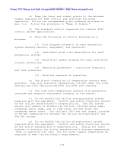
![HVAC và Dehumidifying Systems: Hệ thống điều hòa không khí và hút ẩm [chuẩn SEO]](https://cdn.tailieu.vn/images/document/thumbnail/2012/20120202/luly_meo1/135x160/hvac_and_dehumidifiying_systems_b_split_7_2859.jpg)
![HVAC và Dehumidifying Systems: [Mô tả chi tiết/Hướng dẫn/Đánh giá]](https://cdn.tailieu.vn/images/document/thumbnail/2012/20120202/luly_meo1/135x160/hvac_and_dehumidifiying_systems_b_split_6_8164.jpg)
![Hệ thống HVAC và Dehumidifying: [Thông tin chi tiết/Hướng dẫn/Lựa chọn]](https://cdn.tailieu.vn/images/document/thumbnail/2012/20120202/luly_meo1/135x160/hvac_and_dehumidifiying_systems_b_split_5_3816.jpg)
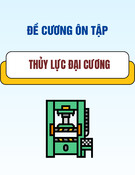
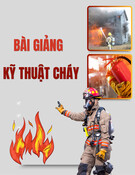
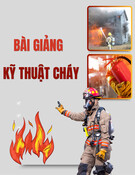
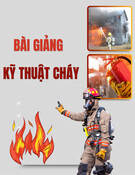
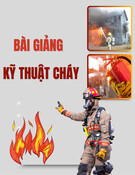
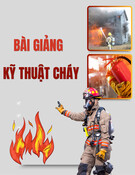
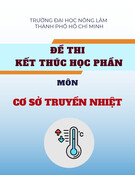
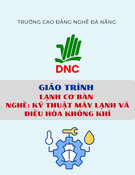
![Ngân hàng trắc nghiệm Kỹ thuật lạnh ứng dụng: Đề cương [chuẩn nhất]](https://cdn.tailieu.vn/images/document/thumbnail/2025/20251007/kimphuong1001/135x160/25391759827353.jpg)






